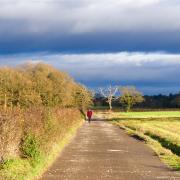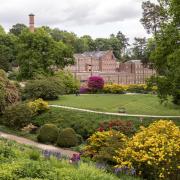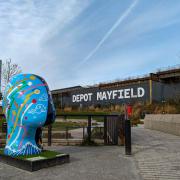James Balme visits a village at the centre of historic conflict
On a sandstone ridge along the banks of the river Dee and south of Chester stands the ancient village of Farndon. The area saw much activity during the Roman occupation of Britain and archaeological investigations in the village concluded that during Roman times there was possibly a villa or small military outpost nearby. The Domesday book of 1086 recorded that the village consisted of just 34 households.
Farndon has witnessed many historical events in its time; indeed it was here on 17th July 924 AD that the Anglo-Saxon King Edward known as Edward the Elder died. Edward was the ruler of the West Saxons and son of Alfred the Great and spent many years of his early reign fighting in battle against the Vikings. At this time the village was referred to as Farndon-on-Dee and located in Mercia. Upon his death, Edward’s body was taken to the New Minster at Winchester for burial. Ironically it had been Edward himself who had established the minster.
Farndon stands upon what in ancient times was a hotly disputed England-Wales border with the Welsh town of Holt, Wrexham, just over the river Dee. Throughout the centuries Farndon found itself in either England or Wales depending on the political border, which changed regularly during the border disputes. Around 1345AD, a stone bridge was constructed across the river Dee consisting of nine arches with pointed buttresses and recesses affording protection to anyone crossing on foot from the ever-increasing number of horses and vehicles using the bridge. The bridge remains in use to this day and has changed little since the 14th century.
Within the village, set among a number of ancient timber houses stands the church dedicated to St Chad, first Bishop of the Mercians. It’s believed that on this site there was once a timber church of Saxon origin, replaced with a stone-built church from as early as the 14th century.
In the year 1800 during essential repairs, three ancient monuments of knights wearing armour were uncovered; they had been carefully interred at the east end of the church, were carved from white stone – probably alabaster – and dated to around 1331. Two of the monuments were immediately ground down and sold as white sand, however, the third was saved from destruction and is believed to be an effigy of Patrick de Barton.
While St Chad’s has its roots firmly in the early medieval period what we see today is the result of many restorations carried out during the 18th and 19th centuries but it was in the 17th century when history wreaked havoc on the building, as Farndon played a major part during the English Civil War. In 1643, Sir William Brereton, 1st Baronet and commander of the Lancastrian and Cheshire Parliamentarian forces decided St Chad’s would make perfect barracks and duly moved more than 2,000 troops into the area in and around the church. The medieval stone bridge was key to controlling the border area and it wasn’t long before the fighting against the Royalists spilled over into the churchyard itself. The damage inflicted on the church was so severe that all but the tower had to be rebuilt in 1658. The 14th-century tower that remains standing today still carries the scars of battle with small musket ball marks and cannon shot damage in the soft sandstone from which it was constructed.
In 1645 advancing Royalists forced the Parliamentarian troops held up in the tower to flee the church leaving it in a perilous state. The Parliamentarians of Farndon had finally fallen to the Royalists.
My film, St Chad’s – Church and Barracks, can be viewed for free with many other local history films by visiting my channel, youtube.com/@Tvpresenter4history.
Look out for
Fourteenth-century church tower with musket ball and cannon shot damage
Fourteenth-century medieval stone bridge crossing the river Dee between England and Wales
Eighteenth-century table tombs in the churchyard bearing skull and crossbone carvings



























